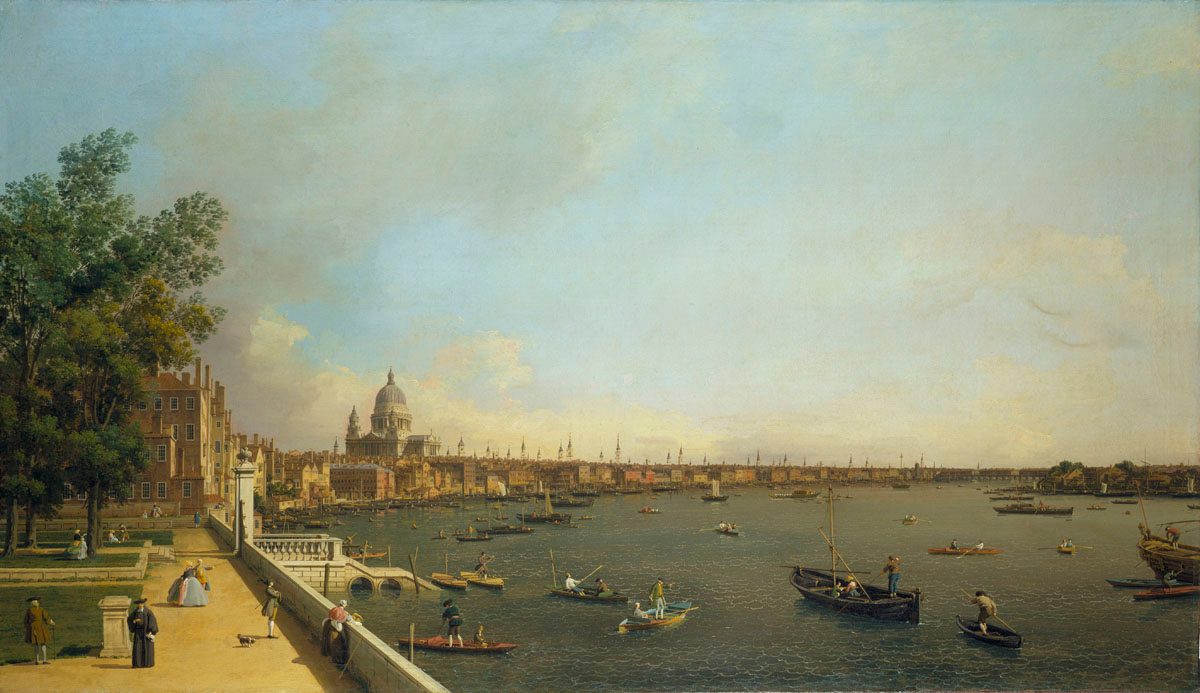Canaletto:
Celebrating
Britain
14 March 2015 – 7 June 2016
Canaletto: Celebrating Britain ran from 14 March 2015 – 7 June 2016.
This was the first time these magnificent paintings and drawings by Canaletto were brought together to provide an overview of his work created between 1746 and 1755, whilst he was visiting Britain.

About the
exhibition
During his nine-year stay in Britain Canaletto documented not just traditional or established views and landmarks but also his (and his patrons’) latest achievements in architecture and engineering. The depictions of these new building works and projects, whether couched in Palladian, Baroque or Gothic styles, celebrate the new-found wealth and assurance of the British nation, reflecting contemporary developments in popular culture such as the rediscovery of Shakespeare; the success of Handel’s Messiah and the cult of King Alfred – which in turn spawned Arne’s immortal ‘Rule Britannia’.
Set into context, by 1750 the first generation of Palladian architects and patrons (Burlington, Campbell and Kent) were dead, and the nation was ready for a more liberal attitude to architectural design. Britain itself was a more stable and confident place than it had been even thirty years before. During the recent War of the Austrian Succession, the nation had held onto its new colonial gains and had succeeded in forcing Spain to open up South America to its traders. The economy was booming and the Jacobite threat had evaporated. Accordingly, a new, more confident generation, profiting from the ‘Georgian Revolution’ and increasingly assured by Britain’s status as a major world power, was prepared to be less regimented by Palladian rules and more eclectic in its architectural patronage seeking cultural inspiration not just from the Mediterranean but also from their own history.
This new found confidence signalled through the architecture of Baroque masters such as Wren (at St Paul’s and St Mary’s, Warwick), Hawksmoor (at Westminster Abbey’s west towers) and the Gothic revival marks Britain out as the new Venice, which was the real subject of Canaletto’s great canvases on display in this exhibition.